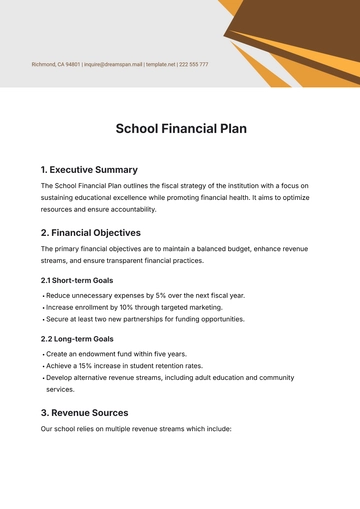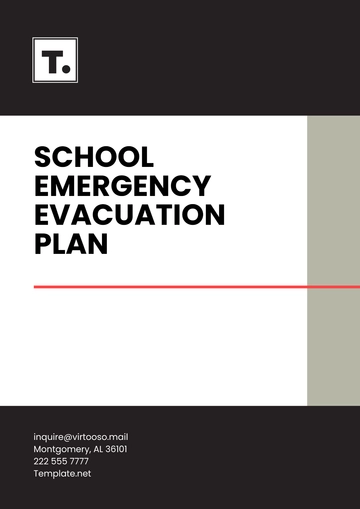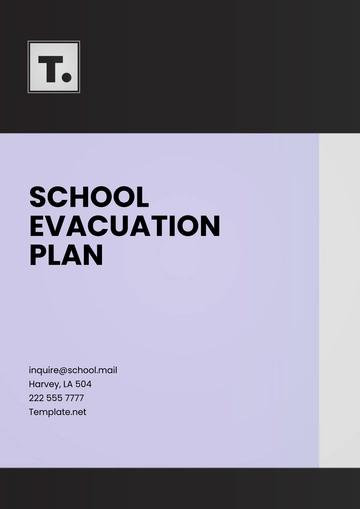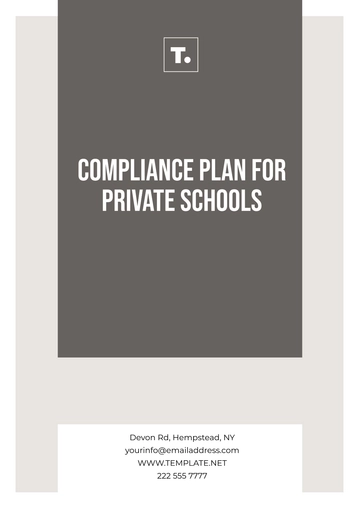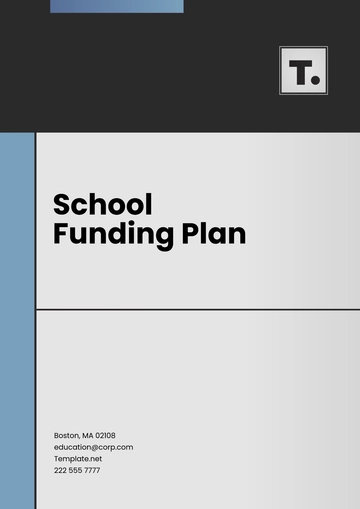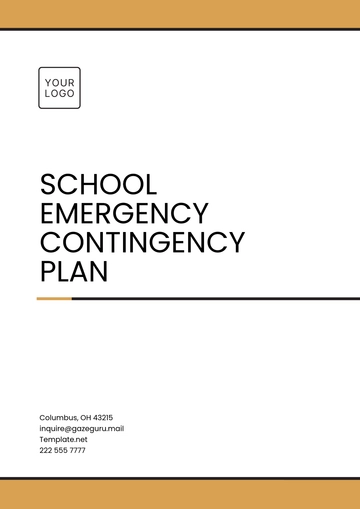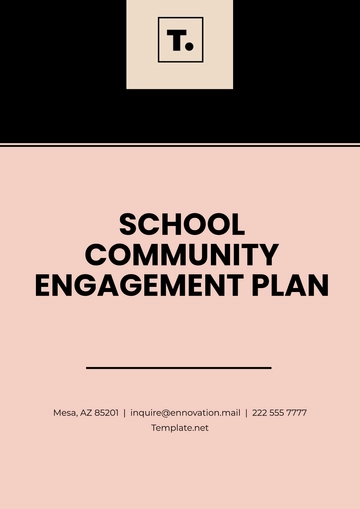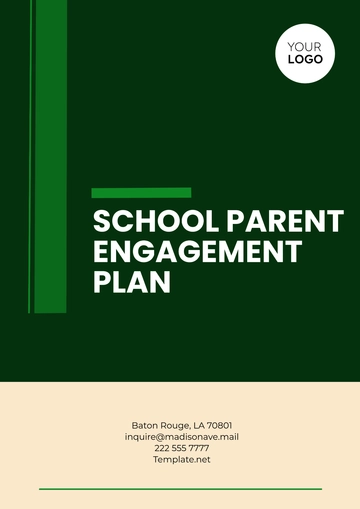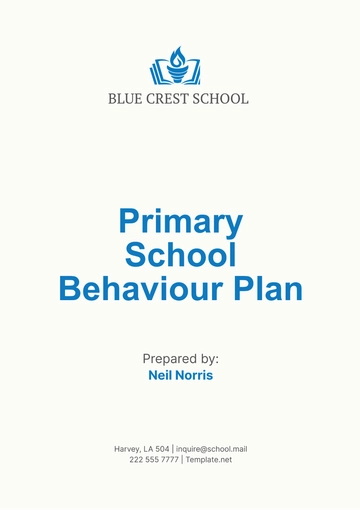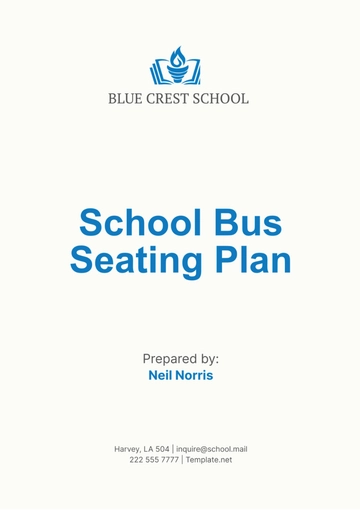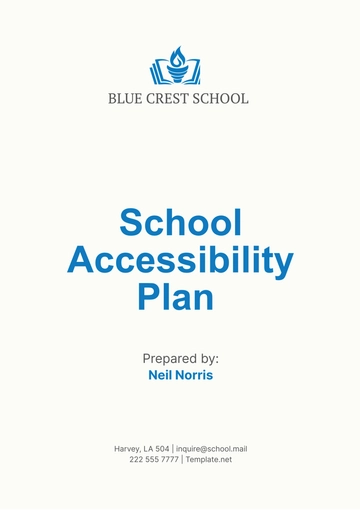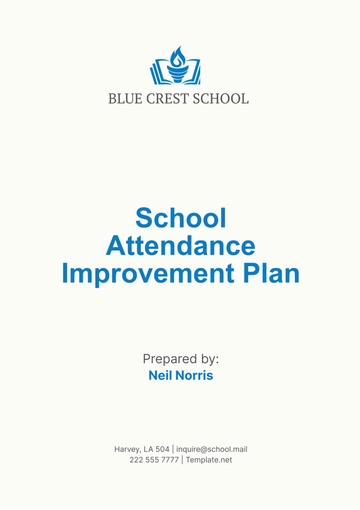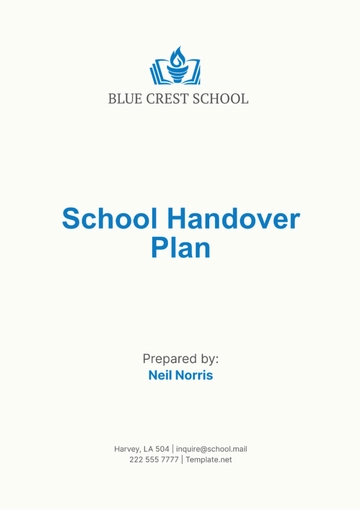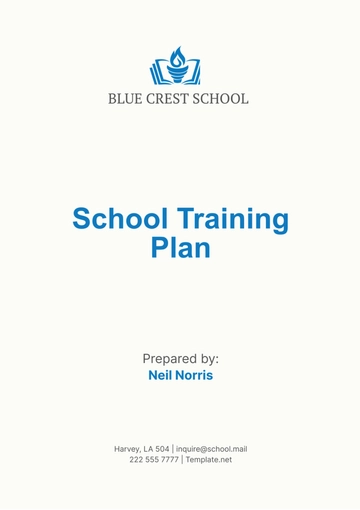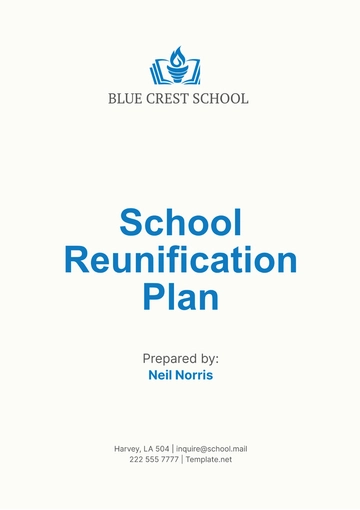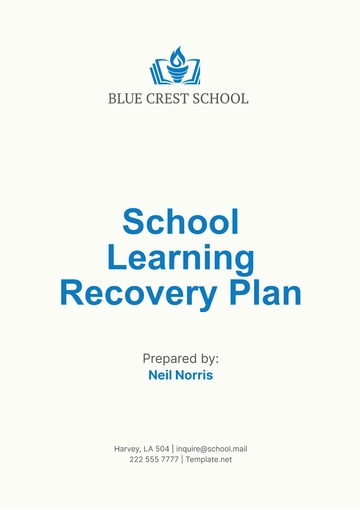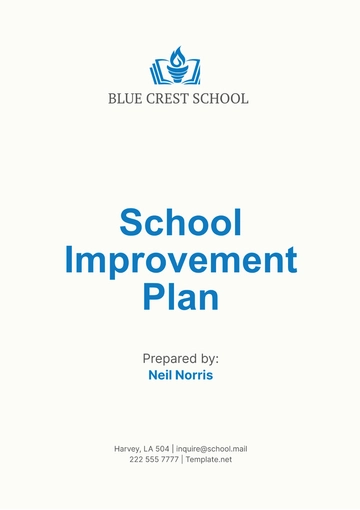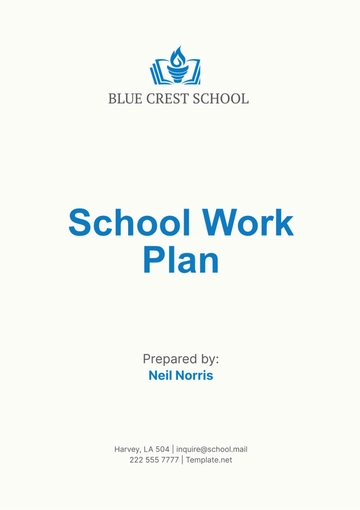Free School Market Research Plan

I. Introduction
A. Background
The education sector is undergoing rapid transformation driven by technological advancements and evolving learning paradigms. Strategic planning is essential for schools to adapt to these changes and thrive in a competitive landscape.
B. Objectives
The primary objective of this School Market Research Plan is to provide actionable insights that will inform strategic decision-making for [YOUR COMPANY NAME].
II. Research Objectives
A. Identify Market Trends
Analyze current trends in education, such as personalized learning, digital classrooms, and STEM education.
B. Assess Competitive Landscape
Evaluate local schools, online learning platforms, and educational services to understand competitive strengths and weaknesses.
C. Understand Customer Needs
Gain insights into the needs and preferences of students, parents, and educators through surveys and interviews.
D. Explore Growth Opportunities
Identify potential areas for growth, such as expanding course offerings or implementing innovative teaching methods.
III. Methodology
A. Data Collection
Primary Research
Conduct surveys among students, parents, and teachers to gather insights into their preferences, challenges, and expectations from the education system.
Organize focus group discussions with representatives from different stakeholder groups to delve deeper into specific topics such as curriculum design, technology integration, and extracurricular activities.
Secondary Research
Review industry reports, academic journals, and government publications to understand broader trends and policy developments in the education sector.
Analyze data from educational conferences, seminars, and workshops to capture expert opinions and emerging ideas in education.
IV. Key Findings
A. Market Trends
Increasing demand for online learning platforms, driven by the need for flexibility and accessibility in education.
Growing interest in project-based learning approaches as educators recognize the importance of real-world applications in student learning experiences.
The emergence of personalized learning initiatives leveraging technology to tailor educational content and pace to individual student needs.
B. Competitive Analysis
Local schools: While traditional brick-and-mortar schools maintain strong community ties and a sense of belonging, many struggle with adapting to digital learning environments and lack comprehensive technology integration.
Online learning platforms: Offer a wide range of courses and resources accessible from anywhere, but face challenges in providing personalized support and fostering social interaction among students.
EdTech startups: Innovating in areas such as adaptive learning algorithms, virtual reality simulations, and gamified education platforms, presenting both competition and potential partnership opportunities for traditional schools.
C. Customer Insights
Students: Desire for engaging, interactive learning experiences that allow for creativity and exploration. They value flexibility in scheduling and access to diverse learning resources.
Parents: Prioritize safety, academic excellence, and holistic development for their children. They seek transparency and communication from schools regarding their child's progress and well-being.
Educators: Express interest in professional development opportunities to enhance teaching practices, integrate technology effectively, and address diverse student needs in the classroom.
V. Budget and Resources
Item | Description | Estimated Cost ($) |
|---|---|---|
Learning Management System (LMS) | Implementation of a digital platform for online coursework | $50,000 |
Community Partnership Initiatives | Development of partnerships with local organizations | $20,000 |
IT Staff | Personnel for LMS setup and maintenance | TBD |
Community Liaison | Personnel for partnership development | TBD |
This table outlines the estimated costs associated with key items in the budget and resource allocation for implementing the strategic recommendations. The actual costs may vary depending on specific requirements and negotiations with vendors or service providers.
VI. Strategic Recommendations
A. Strategic Goals
Enhance digital learning capabilities to provide a blended learning experience that combines the best of online and traditional methods.
Foster a culture of innovation and collaboration among students, educators, and the broader community to prepare students for success in an increasingly interconnected world.
B. Action Plan
Invest in infrastructure upgrades to support reliable internet connectivity and access to digital devices for all students.
Develop partnerships with local businesses, universities, and community organizations to provide experiential learning opportunities, mentorship programs, and internships for students.
C. Implementation
Establish a task force comprising school administrators, teachers, students, and community representatives to oversee the implementation of strategic initiatives.
Conduct pilot programs and feedback sessions to test new approaches and gather input from stakeholders for continuous improvement.
D. Monitoring and Evaluation
Implement data analytics tools to track student performance, engagement metrics, and feedback on new initiatives.
Regularly review progress against strategic goals and adjust strategies as needed based on emerging trends and stakeholder feedback.
VII. Risk Assessment
A. Identify Risks
Technical Issues During LMS Rollout
There is a risk of encountering technical glitches or compatibility issues during the implementation of the Learning Management System (LMS). These issues could disrupt online coursework delivery and impact student learning experiences.
Difficulty in Securing Internship Placements
While partnering with local businesses and organizations for internship opportunities, there may be challenges in securing placements for all students. Factors such as limited availability of positions or mismatch between student skills and employer requirements could pose obstacles.
B. Mitigation Strategies
Technical Issues During LMS Rollout
Conduct thorough testing and pilot runs of the LMS platform before full-scale deployment to identify and address any technical issues proactively.
Provide comprehensive training and technical support for teachers and students to troubleshoot common issues and ensure a smooth transition to the new platform.
Establish contingency plans and alternative communication channels in case of system downtime or disruptions.
Difficulty in Securing Internship Placements
Forge partnerships with a diverse range of businesses and organizations to increase the pool of available internship opportunities and accommodate varying student interests and skill sets.
Provide guidance and support to students in preparing resumes, honing interview skills, and articulating their value proposition to potential employers to enhance their competitiveness in the job market.
Explore virtual internship options or project-based collaborations with industry partners to offer alternative learning experiences if traditional on-site placements are limited.
VIII. Ethical Considerations
A. Participant Confidentiality
Obtain informed consent from participants before collecting any data and ensure anonymity in reporting findings to protect their privacy.
Safeguard personal information collected during surveys and interviews and adhere to data protection regulations such as GDPR and COPPA.
B. Compliance with Regulations
Ensure compliance with ethical guidelines set forth by relevant professional associations and educational governing bodies.
Stay updated on changes in regulations related to data privacy, intellectual property rights, and student welfare to maintain ethical standards throughout the research process.
IX. Conclusion
A. Summary
The comprehensive research undertaken has provided invaluable insights into the current landscape of the education sector, highlighting key trends, competitive dynamics, and stakeholder needs.
These findings serve as a solid foundation for strategic planning efforts aimed at positioning [YOUR COMPANY NAME] as a forward-thinking institution that meets the evolving needs of students, parents, and educators.
B. Next Steps
Based on the research findings, the next steps for [YOUR COMPANY NAME] involve the implementation of strategic initiatives outlined in the action plan to enhance digital learning capabilities, foster innovation, and strengthen community partnerships.
Continuous monitoring and evaluation will be essential to track progress, identify areas for improvement, and ensure that [YOUR COMPANY NAME] remains agile and responsive to changes in the education landscape.
- 100% Customizable, free editor
- Access 1 Million+ Templates, photo’s & graphics
- Download or share as a template
- Click and replace photos, graphics, text, backgrounds
- Resize, crop, AI write & more
- Access advanced editor
Boost your educational insights with Template.net's School Market Research Plan Template. This customizable and editable template is perfect for understanding student needs and market trends. Leverage the power of our AI Editor Tool to create comprehensive and accurate research plans. Enhance your strategic planning and achieve your goals with this essential resource.
You may also like
- Finance Plan
- Construction Plan
- Sales Plan
- Development Plan
- Career Plan
- Budget Plan
- HR Plan
- Education Plan
- Transition Plan
- Work Plan
- Training Plan
- Communication Plan
- Operation Plan
- Health And Safety Plan
- Strategy Plan
- Professional Development Plan
- Advertising Plan
- Risk Management Plan
- Restaurant Plan
- School Plan
- Nursing Home Patient Care Plan
- Nursing Care Plan
- Plan Event
- Startup Plan
- Social Media Plan
- Staffing Plan
- Annual Plan
- Content Plan
- Payment Plan
- Implementation Plan
- Hotel Plan
- Workout Plan
- Accounting Plan
- Campaign Plan
- Essay Plan
- 30 60 90 Day Plan
- Research Plan
- Recruitment Plan
- 90 Day Plan
- Quarterly Plan
- Emergency Plan
- 5 Year Plan
- Gym Plan
- Personal Plan
- IT and Software Plan
- Treatment Plan
- Real Estate Plan
- Law Firm Plan
- Healthcare Plan
- Improvement Plan
- Media Plan
- 5 Year Business Plan
- Learning Plan
- Marketing Campaign Plan
- Travel Agency Plan
- Cleaning Services Plan
- Interior Design Plan
- Performance Plan
- PR Plan
- Birth Plan
- Life Plan
- SEO Plan
- Disaster Recovery Plan
- Continuity Plan
- Launch Plan
- Legal Plan
- Behavior Plan
- Performance Improvement Plan
- Salon Plan
- Security Plan
- Security Management Plan
- Employee Development Plan
- Quality Plan
- Service Improvement Plan
- Growth Plan
- Incident Response Plan
- Basketball Plan
- Emergency Action Plan
- Product Launch Plan
- Spa Plan
- Employee Training Plan
- Data Analysis Plan
- Employee Action Plan
- Territory Plan
- Audit Plan
- Classroom Plan
- Activity Plan
- Parenting Plan
- Care Plan
- Project Execution Plan
- Exercise Plan
- Internship Plan
- Software Development Plan
- Continuous Improvement Plan
- Leave Plan
- 90 Day Sales Plan
- Advertising Agency Plan
- Employee Transition Plan
- Smart Action Plan
- Workplace Safety Plan
- Behavior Change Plan
- Contingency Plan
- Continuity of Operations Plan
- Health Plan
- Quality Control Plan
- Self Plan
- Sports Development Plan
- Change Management Plan
- Ecommerce Plan
- Personal Financial Plan
- Process Improvement Plan
- 30-60-90 Day Sales Plan
- Crisis Management Plan
- Engagement Plan
- Execution Plan
- Pandemic Plan
- Quality Assurance Plan
- Service Continuity Plan
- Agile Project Plan
- Fundraising Plan
- Job Transition Plan
- Asset Maintenance Plan
- Maintenance Plan
- Software Test Plan
- Staff Training and Development Plan
- 3 Year Plan
- Brand Activation Plan
- Release Plan
- Resource Plan
- Risk Mitigation Plan
- Teacher Plan
- 30 60 90 Day Plan for New Manager
- Food Safety Plan
- Food Truck Plan
- Hiring Plan
- Quality Management Plan
- Wellness Plan
- Behavior Intervention Plan
- Bonus Plan
- Investment Plan
- Maternity Leave Plan
- Pandemic Response Plan
- Succession Planning
- Coaching Plan
- Configuration Management Plan
- Remote Work Plan
- Self Care Plan
- Teaching Plan
- 100-Day Plan
- HACCP Plan
- Student Plan
- Sustainability Plan
- 30 60 90 Day Plan for Interview
- Access Plan
- Site Specific Safety Plan
